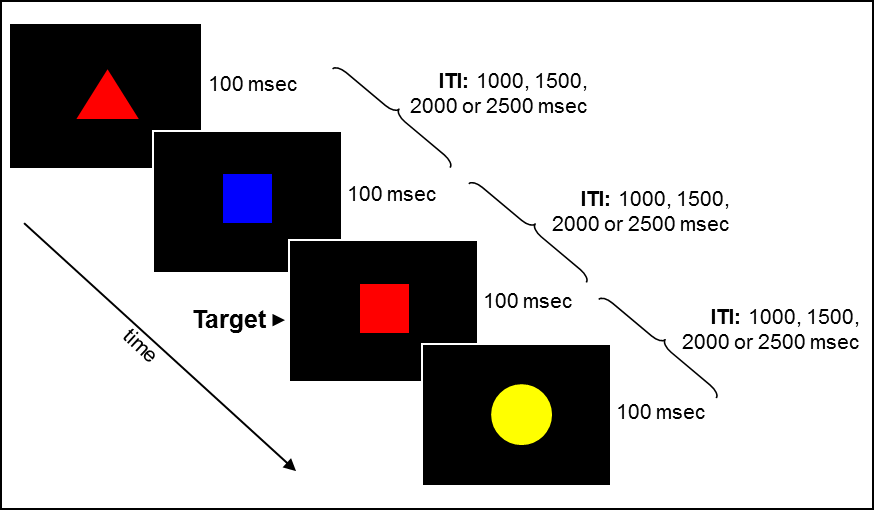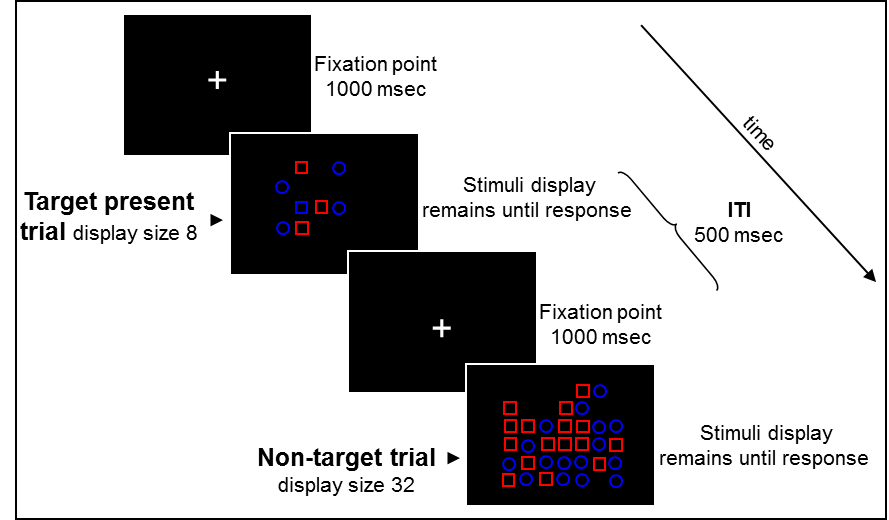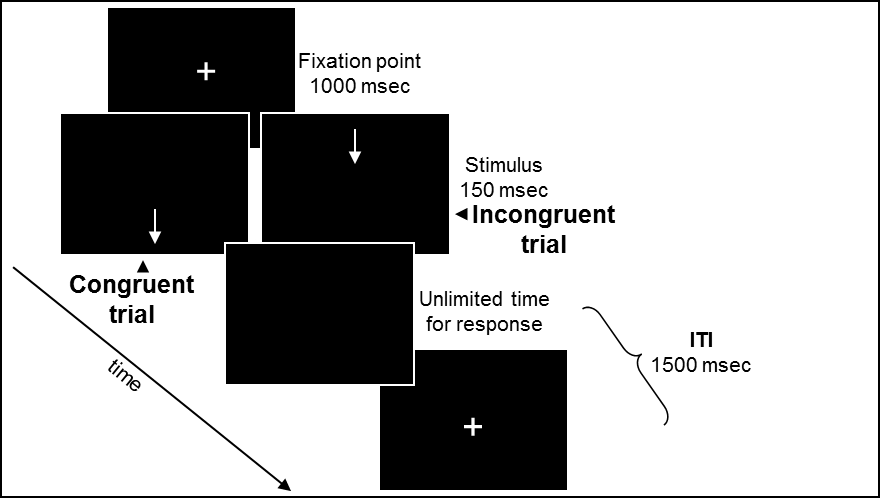Assessment tools – Forming a personal attention profile
In order to form a detailed assessment of attention functioning we use four attention tasks that were developed along with the four functions of attention model proposed by Tsal, Shalev and Mevorach (2005) in the context of ADHD. The theoretical framework of this model is derived from Posner and Petersen’s (1990) influential theory of attention networks. The four functions of attention model refers to four distinct functions within the attention regime: (a) sustained attention – the ability to allocate attentional resources to a non-attractive task over time while maintaining a constant level of performance; (b) selective (spatial) attention – the ability to focus attention on a relevant target while ignoring adjacent distracters; (c) orienting of attention – the ability to direct attention over the visual or auditory field according to sensory input, and to disengage and reorient efficiently; (d) executive attention – the ability to resolve conflicts of information and/or responses.
Apart from a detailed baseline (pre-intervention) the personal attention profile provides valuable information about the child’s attention functioning which plays an important role in different learning contexts (academic, social, and emotional).
In a study looking at a sample of children with or without ADHD, Tsal, Shalev & Mevorach (2005) reported sustained attention deficits as the most pronounced, characterizing most of the ADHD sample, while each of the deficits in selective, orienting and executive attention characterized approximately half of the ADHD sample. Importantly, their findings showed that ADHD can entail deficits in any combination of attention functions. Thus, different children with ADHD can possess divergent clusters of attention deficits.
Description of the assessment tasks
We implement the four functions of attention model by using four computerized neuropsychological tasks, serving as indicators of performance in each of the attention functions. All four tasks were established by Tsal, Shalev and Mevorach (2005), where they were used to assess attention functioning in children with ADHD and without it. Each attention test starts with a short practice block and the test lasts approximately 12 minutes. When many breaks are needed the overall duration will be longer, accordingly.
The task that assesses sustained attention is always administered in a continuous mode (no possible breaks!) and always as the first task. The other three attention tasks are administered in blocks (that is, 4 series of 40 trials). Note however, that if it is necessary these three tasks may be administered in a ‘trial by trial’ mode so that the experimenter initiates the onset of each single trial (enabling to accommodate restless behavior of the child etc…). Also, it is possible to use unlimited duration of presentation (instead of brief durations of presentation) in cases where these tasks seem to be too difficult.
Sustained Attention
For sustained attention, we use a Continuous Performance Test (CPT). Participants are presented with a long series of stimuli but are instructed to respond to a single reoccurring prespecified target (a red square) while withholding responses to all other, non-target stimuli. There are four possible shapes (square, circle, triangle and star) and four possible colors (red, blue, green and yellow). As soon as a target appears the child is requested to press the spacebar. Using a low rate of target stimuli (30%) and varying the inter-stimulus interval (ISI), this task maintains a high demand on sustained attention but minimizes the involvement of other cognitive factors (Shalev, Ben-Simon, Mevorach, Cohen & Tsal, 2011; Stern & Shalev, In Press).

Selective Attention
For selective attention, we used a conjunctive search task (Tsal, Shalev, & Mevorach, 2005). Participants were instructed to search for a target stimuli appearing among distracters. The displays varied in their size (i.e. the number of distractors), enabling estimation of the effect of attentional load on performance. The child is instructed to fixate on a central fixation point which is followed by a display of items. The child is requested to decide whether the display contains the target – a blue square among the distractors (blue circles and red squares). The target appears in 50% of the displays. If a target was detected the child has to press the ‘L’ key and if the target is absent then he has to press the ‘A’ key. If necessary, stickers may be used on the relevant keys to facilitate the implementation of the response rule (the same procedure may be applied with the other two tasks if necessary).

Orienting Attention
For orienting of attention, we use a peripheral cueing paradigm (Posner, Snyder & Davidson, 1980) with an exogenous cue (Jonides, 1981). Participants have to discriminate a stimulus – a triangle or a circle – preceded by an abrupt onset at either the target’s location (valid cue) or the opposite side of fixation (invalid cue). When the target is a tiangle the child has to press the ‘L’ key and when the target is a circle s/he has to press the ‘A’ key. The difference in performance between valid and invalid trials indicates the ability to orient attention and efficiently disengage from irrelevant locations (Tsal, Shalev, & Mevorach, 2005).

Executive Attention
For executive attention, we use a Location-Direction Stroop-like task (Stroop, 1935) with a spatial aspect. Participants have to respond either to the location or the direction of an arrow (in different blocks) appearing on the screen, while ignoring the other irrelevant dimension. Half of the stimuli are congruent trials (that is, the location on the screen and the direction of the arrow match; i.e. an arrow presented below fixation pointing downwards) and half of them are incongruent (i.e., an arrow presented above fixation pointing downwards). In the first two blocks of the tasks participants are requested to judge the location of the arrow (relative to the fixation point; if it is presented above the fixation they have to press ‘L’ and if it is presented below the fixation they have to press ‘A’) and in the last two blocks they are requested to judge its direction (Tsal, Shalev, & Mevorach, 2005). The widely used interference effect in this task reflects the extent to which conflicting irrelevant information is being effectively suppressed.

